Superfitness: The Intensity & Complexity Spectrum
The combination of physical intensity with cognitive complexity is where the magic happens when it comes to fitness for brain health. Here’s one way to do it.
Lost your password? Please enter your email address. You will receive a link to create a new password.
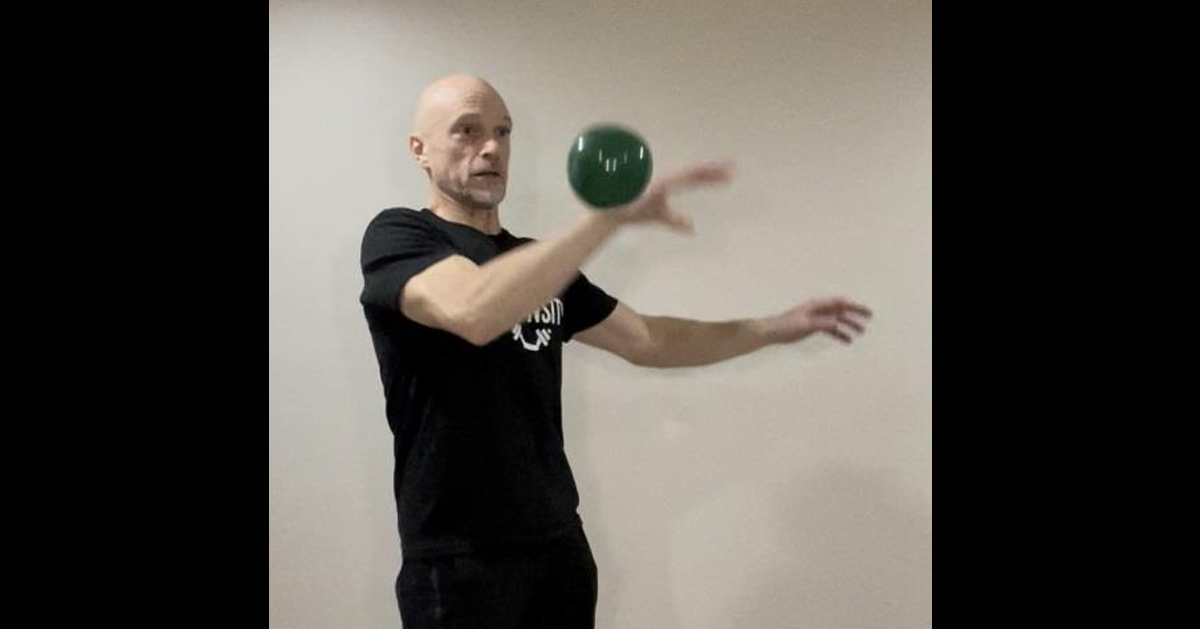
The combination of physical intensity with cognitive complexity is where the magic happens when it comes to fitness for brain health. Here’s one way to do it.

The coronavirus pandemic has had a major effect on all areas of people’s lives, and physical activity levels are no exception. Recent studies show that the pandemic and associated lockdowns prompted many people to go one of two ways with regard to their exercise program. They either decided to work out more in an attempt to get in the best shape of their lives, or chose to spend lockdowns sitting at the computer, watching TV and/or enjoying long phases of inactivity. Both of these choices, while seemingly unrelated, have led to an increased number of people experiencing musculoskeletal injuries.1,2,3
The COVID-19 situation prevented most people from utilizing in-person fitness and exercise services. Consequently, those individuals who decided to increase their physical activity levels often did so without the supervision of a qualified fitness or exercise professional. In addition to engaging in exercise endeavors unsupervised, research found that they tended to work out longer and harder than would have been appropriate, and tried more extreme forms of exercise. This has resulted in many of these people experiencing musculoskeletal overuse injuries.1

Alternatively, individuals who stopped exercising during the pandemic and instead spent more time watching TV, playing computer games, and generally sitting for longer periods of time became deconditioned. Once lockdowns and COVID-19 restrictions began to ease up, these people experienced musculoskeletal injuries as they tried to return to their pre-pandemic exercise levels in a deconditioned state. 1,2
Corrective exercise specialists and fitness professionals well-versed in corrective exercise methodologies are uniquely positioned to help people overcome pain, injuries and musculoskeletal issues that have arisen as a result of over- or under-exercising during the pandemic.
Helping Over-Exercisers
Clients who sustained overuse injuries in their pandemic pursuit of ultimate fitness will benefit most from incorporating activities into their exercise regime that actively promote rest, recovery and rejuvenation. Coach these people to take days off from strenuous activity to instead perform self-myofascial release and gentle stretching exercises appropriate for their musculoskeletal issue or condition. Areas of the body that were overly-strained, stressed and/or injured during high levels and intensities of exercise should now be prioritized with these corrective exercise techniques.4
Helping Under-Exercisers
A deconditioned client trying to resume their pre-pandemic physical activity levels without adequate reintroduction will benefit from the application of gradual progression. Coach them about the need to address musculoskeletal changes that have occurred as a result of prolonged static postures like sitting, and the importance of slowly reintroducing exercise stress to help safeguard their body from the pain and injury that can result if they overdo it upon returning to the gym.4

As the availability of in-person exercise and fitness services begins to resume, corrective exercise specialists are in a unique position to assist people that have sustained musculoskeletal injuries as a result of too much or too little exercise. Whether helping clients get over pain and injuries incurred during the pandemic, or reintroducing exercise safely to those who are unfit and out of shape as a result of long periods of inactivity, expertise in the area of corrective exercise is now more important than ever.
Justin Price is one of the world’s foremost experts in musculoskeletal assessment and corrective exercise and creator of The BioMechanics Method Corrective Exercise Specialist certification (TBMM-CES). The BioMechanics Method is the fitness industry’s highest-rated CES credential with trained professionals in over 70 countries. Justin is also the author of several books including The BioMechanics Method for Corrective Exercise academic textbook, a former IDEA Personal Trainer of the Year, and a subject matter expert for The American Council on Exercise, Human Kinetics, TRX, BOSU, MFN, Arthritis Today, BBC, Discovery Health, Los Angeles Times, Men’s Health, MSNBC, New York Times, Newsweek, Time, Wall Street Journal, WebMD and Tennis Magazine.
References

Start with these methods to boost your mood naturally and defeat negative thinking.
Some days I feel more anxious than others. Feelings alter the way we think, and thoughts can turn negative feelings like depression, anxiety or anger into a positive experience just as easily if we practice self-help exercises (psychological not physical, in this case) to dissolve the issues. Usually there is a trigger that sets things reeling. Certain exercises can facilitate a shift from negative thinking or illogical thoughts to a happier, more balanced feeling.
Realize that life throws us curve balls just to keep us grounded (pardon the pun). Staying positive is not realistic or easy. For every negative emotion (for instance, sadness over the loss of a loved one or friend), there’s both a healthy and a negative version. Here are some useful tips that can make a difference.

Fun is cheap. If you have forgotten how to have fun, don’t wait for the next wedding or family reunion to laugh it up. Research shows that having fun and laughter decreases levels of the damaging stress hormones cortisol and epinephrine. It also helps to laugh because it supports our immune system and protects us from illness. One minute of laughter boosts your immune system for over 24 hours. I am sure my last cold was short-lived because I made it a point, even when I felt terrible, to watch a funny movie or read an entertaining book. Turn off the news at dinner time or before you go to sleep.
When feeling down, reach out to friends who don’t allow you to dwell on your pain, but also don’t ignore it. Stay away from the “Debbie Downers.” “If we surround ourselves with people who are joyous, hopeful, or make us laugh and live in the moment, that makes us feel much better.” – Helen Grusd, Ph.D, clinical psychologist
You probably have a lot to be thankful for, despite bouts of pain or an injury that may have slowed you down. Focus on gratitude. Perhaps make a list you read out loud to yourself (it helps to hear yourself say the words) every day, and eventually you can memorize it, as it becomes a part of your consciousness and diverts any negative feelings that keep you stuck.
It’s hard for negative thoughts to occupy the same space in your brain if you’re listening to happy music. A recent study found listening to upbeat music improves moods short term and boosted overall happiness over a two-week period. It can also reduce your level of pain. You’ll find yourself sitting less as you tap your toes to the rhythm of the song. Then, stand up and dance as if no one is looking.
Mood busters only work, like exercise for our body, if you practice regularly and before your mood sinks too low.
Those who enjoy spending time outdoors are more likely to like themselves. Be a nature lover. Taking a walk or hike, in addition to relieving depression, it helps distract from negative energy you might be carrying. If you would rather be outside and just pull weeds or plant a new exotic plant, that will work too. It also keeps fitness buffs energized.
Reprinted with permission from Lori Michiel. Originally published on Lori’s Fitness Blog For Active Adults and Seniors.
Lori Michiel, NASM, has been assisting seniors in their homes since 2006 with customized exercise programs including those designed to address Parkinson’s, metabolic disorders, arthritis and diabetes. These adaptive programs are specifically designed to improve balance, circulation, flexibility, mobility and promote independence. Lori Michiel Fitness has over 40 certified trainers who are matched with clients in Los Angeles, Ventura and Orange Counties. Connect with Lori at www.LoriMichielFitness.com.

Something strange is happening to the fitness industry. Or maybe it already happened – years ago – and I’m only just noticing now (having no social media presence can be a mixed blessing). There’s a shift in how fitness is being packaged and sold, a shift that emphasizes an almost slave-like devotion to the self. During my lifetime the act of “working out” was usually presented as democratic in nature, a basic right accessible to all. Now, it’s being rebranded as a sort of mandatory luxury item for this generation of digital nomads.
Hell, even the language has changed. Health is “wellness”; exercising is “training”; getting a massage is “self-care.” Forgive me for coming off as a younger Andy Rooney, but back in my day you’d hit the gym a few times a week, either before or after work, and that was that. Maybe you’d play some ball with buddies on the weekend, maybe run an easy 5K Sunday morning. Food mattered, but it wasn’t something to stress over.

Today the expectation is to be up at 4 a.m. for morning meditation and journaling while riding out the final wave of your 12-hour daily fast. Breakfast – and every morsel that passes your lips thereafter – is posted on Instagram for the approval of the oh-so legitimate dietitians, trainers and food scientists who lurk in the comments section. Your workout is no longer just that, it’s an “experience” to be shared with your tribe/team/pod, one that we must pause and express gratitude for whenever possible (quick, grab your journal!).
By now you’re likely wondering what my point is. Hasn’t the pursuit of physical perfection and ultimate longevity always been just a tad self-indulgent? And what’s wrong with indulging the self anyway? My point – and my problem – is that entry into this cult of wellness comes at a ridiculous cost, in both the literal and metaphorical sense of the word. Forget for a moment the time commitment required; society is being duped into believing you need a Fitbit, compression shorts and a $200 pair of lifting shoes to get in shape, when a notebook, sweatpants and Chuck Taylors will do just fine.
Of course, there’s always been a market that caters to the well-heeled. Peloton presents the most extreme example of this absurdity. Have you seen how much those bikes cost? And then there’s the monthly membership to boot. You could fly first-class to France and tour the countryside on your own damn bike for the same price. The same goes for Equinox – not a gym, but a “temple of well-being” that charges its parishioners thousands of dollars for the privilege of spilling sweat inside its walls.
Pay attention to the way these products are being positioned. Peloton ads feature every day, average folks pedaling away on $3,000 machines in their unspectacular homes. Lululemon ads feature every day, average folks running and bending and lifting in outfits that cost more than most people make in a day. The message is clear, yet entirely incongruent with reality. At least Equinox has the decency to showcase their upper crust offerings in the proper context; in keeping with the tradition of aspirational luxury brands, their ads make no sense at all.
Getting in shape doesn’t require a payment plan or a line of credit. I’ve spent time in posh gyms and I’ve spent time in musty warehouses and I can assure you there is next to no correlation between high fees and quality of service. In Toronto, Hone Fitness offers memberships for as low as $30 a month and you can bring a friend whenever you want. The YMCA has 120 fitness centers across Canada with fully-equipped weight rooms and loads of fitness classes; their membership subsidy program ensures everyone, regardless of income, can cycle their stress away. You may not be able to bathe yourself in eucalyptus-infused steam showers afterwards, but really who needs that anyway?
Paul Landini is a personal trainer, health educator and fitness columnist with The Globe & Mail. He specializes in making fitness fun and accessible to all, regardless of their age, gender or abilities. Paul has been a long-time advocate for plant-based nutrition and loves nothing more than dispelling the many myths surrounding vegan and vegetarian diets.

The “CORE” — it seems to be our newest buzz word. I know you’ve been thinking about it. You would have to be blind and deaf not to feel inundated by the very word. Every doctor, fitness enthusiast, and…

Imagine…You’ve planned a big trip and you anticipate that there will be lots of walking and climbing steps, and you’re worried you won’t be able to keep up. Get rid of your doubts and learn how to get ready now.

Long trusted by athletes and bodybuilders to help improve athletic performance, the muscle strength supplement creatine remains either unknown or shrouded in myth among the wider population. But increasingly creatine is being recognized by the medical community for the benefits it can bring beyond just athletic performance. From assisting in injury recovery to helping reduce the risk of falls in the elderly, creatine is a natural, safe, and effective tool all of us can use…
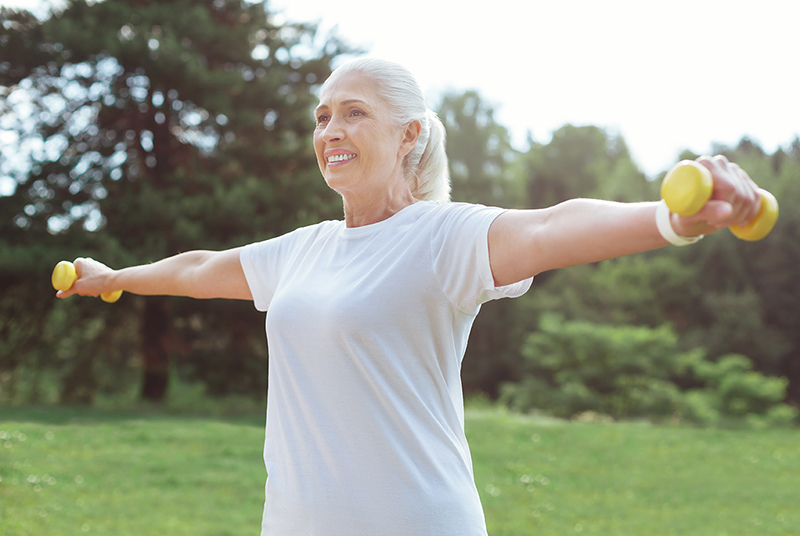
 An important principle that has emerged throughout my writing on “healthy aging” has been the issue of fitness and the role being fit plays in preventing illness and injury, yielding a fulfilling and vibrant life – a “life well lived”. The point of healthy aging is to be in a position as we grow older “to do what we want when we want without getting hurt”. I have always believed that my level of fitness would yield positive results as I got older emotionally, physically, mentally and spiritually – and so far I have been proven right in my own life. The “fitness lifestyle” is a consciousness issue just as healthy aging is as well. I make choices everyday that are designed to enhance my ability to live the way I choose. This always includes high intensity, focused training which will (hopefully) prepare me for the challenging years ahead.
An important principle that has emerged throughout my writing on “healthy aging” has been the issue of fitness and the role being fit plays in preventing illness and injury, yielding a fulfilling and vibrant life – a “life well lived”. The point of healthy aging is to be in a position as we grow older “to do what we want when we want without getting hurt”. I have always believed that my level of fitness would yield positive results as I got older emotionally, physically, mentally and spiritually – and so far I have been proven right in my own life. The “fitness lifestyle” is a consciousness issue just as healthy aging is as well. I make choices everyday that are designed to enhance my ability to live the way I choose. This always includes high intensity, focused training which will (hopefully) prepare me for the challenging years ahead.
Speaking, traveling, teaching, program design, consulting, writing and other activities that I wish to do in my future will require focus, high energy, inspiration, imagination, and physical stamina and endurance. The ability to train the way I am now will translate into the future actions that will yield the result I envision for audiences in the years ahead. Planning for a future that requires me to be prepared to do my work at a high level will also demand that I be as fit as I can be in order to give me the strength to help as many people as I possibly can – while I can. This is my mission – and my purpose.
This article is about something I think about EVERY day. Each of my actions, decisions, and thoughts are applied to the outcome that I seek with every step I take in becoming stronger, faster, quicker, more powerful, balanced, imaginative, flexible and skilled. My purpose is to be able to PERFORM at a high level even as I approach my 70’s and this is the point of my plan – and these articles in this series. How fit are you today for the future you envision for yourself? Does your vision inspire you to reach beyond your grasp? Does it “pull you forward” so that you will take the actions necessary to enable and empower you for the journey ahead? Only you can answer this question! Do it now!
I think of training in terms of performance and so much of fitness today is “gimmicks” – programs designed for the “few” in America who are NOT the obese, overweight, poorly trained, seniors, and youth. The “fatting” of America does NOT include practical programming on TV, the internet – or anywhere for that matter – that appeals to the average, untrained individual struggling just to live a ‘moderately’ happy life. I see this huge “hole” in our society everyday when I go out into the world where the “connection” between being fit and “regular” people is NEVER being made. To most of the world, fitness – or becoming fit – means acquiring a gym membership with all the “hassles” that implies and THAT isn’t healthy or inspiring at ALL!
I worked in the Nautilus and Bally’s systems as a trainer for over ten years and I never once saw the effort being truly made to help people “realistically” ACHIEVE anything. The world outside the gym is a giant “blank” for over two thirds of the population. The only thing I see that is visible today is elementary lifestyle “advice” on Dr. Oz and other related sophomoric network shows that really change nothing. The other major factor in the sales “pitch” to America on fitness comes in the form of “infomercials” that literally “sucker” people into buying USELESS stuff that will never really help them – EVER! The latest gimmick is the “abdominal belt” that will ‘melt” fat away with just 10 minutes a day! This is just the latest in the same old scam – “sell them anything and make a buck in the process!” What a disgrace and a shame that we have resorted to “hucksterism” in this country in order to sell the virtues of being fit! Jack Lalanne’s legacy has almost been completely forgotten today and I want to make sure I play my role in carrying the work he started so long ago forward with me. At least he TAUGHT simple exercises to people of all ages in the 50’s and 60’s with passion AND led them every step of the way during his shows. Those days are long gone!
When we think of helping people to become fit and healthy, we must always remember to train ourselves FIRST so that we can inspire others to do the same. I will not TELL anyone anything because for each of us our understanding and perspectives are different – just as each of us is different. I will always side with “being the example of the change I wish to see in the world” – the theme of my first article in this series. How do I retain my skill level with the “seven keys” of fitness highlighted above? I maintain them – and will elevate myself to higher levels of performance in the future – through my weekly weight training program, running 40 to 50 miles a week, stretching, and meditation. This dedication to fitness will hopefully allow me to do what I want, when I want, without injury and live with joy the active future of service I am envisioning for myself. I believe that with each passing day we are ALL falling ‘behind the fitness curve’ in life – whether we are training or not – and it is imperative that we translate our passion for being fit to others through our example. If we CAN’T DO IT, WE SHOULDN’T BE TEACHING IT!
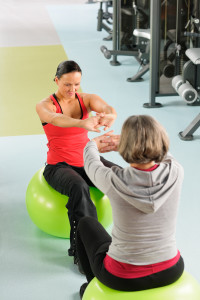 Conclusion
ConclusionMy primary commitment to myself each day is to NEVER GIVE UP. If I am not sick or injured, I am training – training for my life to come and the role I have chosen for myself as “an agent of change in the world”. Each of us MUST decide what it is WE STAND FOR so that others can be inspired by our example. Jack LaLanne taught me through his example – as John Wooden did – that it is WHO WE ARE on the inside that will be the ‘key’ to inspiring and encouraging others to reach beyond their current grasp and strive for more than they ever dreamed possible. I am convinced every day by what I see in the world that what we have to offer the ‘many’ is desperately needed now more than ever. If we do not take up this challenge, who will? When will the REAL change come? It will only come when we change ourselves (on the inside – healthy aging is an inside job, remember?) and that is the greatest challenge that we will ALL face in life. It is worth fighting for this principle every day of our lives. Will you take it upon yourself TODAY and join me in this “journey of change” – and touch millions of lives in the process? I hope your answer is a resounding YES!
Article reprinted with permission from Nicholas Prukop.
Nicholas Prukop is an ACE Certified Personal Trainer & a Health Coach, a fitness professional with over 25 years of experience whose passion for health and fitness comes from his boyhood in Hawaii where he grew up a swimmer on Maui. He found his calling in writing his first book “Healthy Aging & You: Your Journey to Becoming Happy, Healthy & Fit” and since then he has dedicated himself to empowering, inspiring and enabling people of all ages to reach for the best that is within them and become who they are meant to be – happy, healthy and fit – and be a part of a world where each person can contribute their own unique gifts to life.
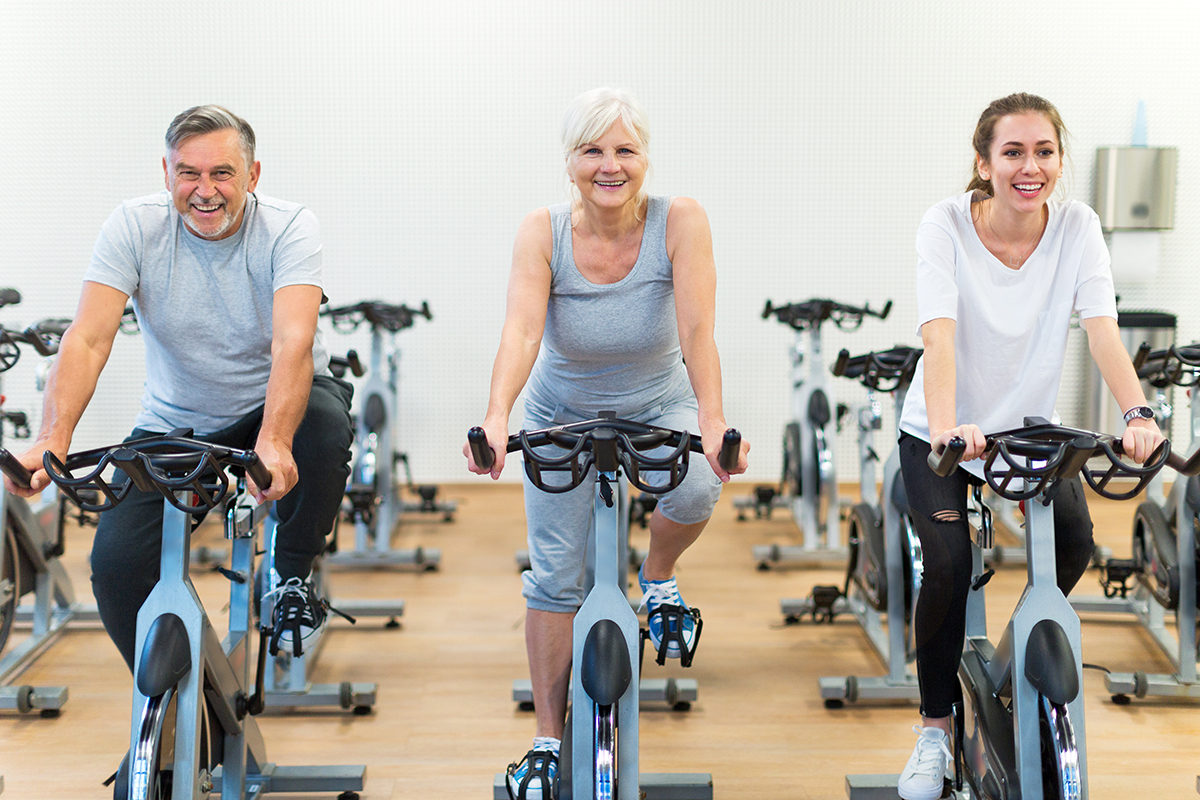
It’s not news that the brain changes with age. Significant changes in regions of the brain occur in healthy adults as they age, based on MRI studies.(1) The caudate, cerebellum, hippocampus, and association cortices shrunk substantially. This shrinkage in the hippocampus and the cerebellum accelerates with age. The hippocampus, the site for new memory formation, is involved with learning and emotion with a rich supply of estrogen and progesterone receptors. The cerebellum coordinates voluntary movements including all conscious muscular activity, balance, coordination, and speech.
The United States is experiencing both a declining birth rate and an increased average life span. This combination will increase the percentage of people over the age of 65 to 19.6%, resulting in a total of 71 million people by the year 2030.(2) The number of people over the age of 80 is also expected to increase to 19.5 million by 2030.(2) These changes will greatly increase the number of people with dementia since 6% to 10% of North American individuals aged 65 or older have dementia; this increases to 30% in those aged 85 or over.(3)
Dementia, or senility, is a difficult-to-define cluster of symptoms that include memory loss, loss of vocabulary, and loss of motor function in the absence of a change in the level of consciousness. Dementia can be measured qualitatively by verbal memory tests such as the Blessed Orientation-Memory-Concentration test, comprising six questions as listed in the following table:
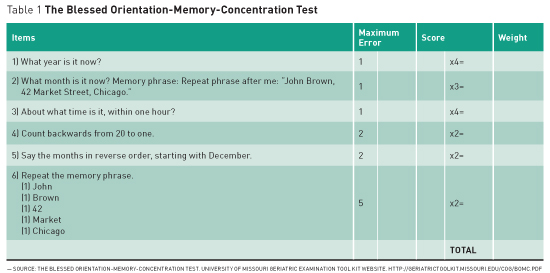
The scores from each of the table’s six items are multiplied to produce a weighted score. Score 1 for each incorrect response; weighted error scores greater than 10 are consistent with dementia.(4)
The incidence of Alzheimer’s dementia can be used as a measurement of brain health.(5) As part of his study “Exercise Is Associated With Reduced Risk for Incident Dementia Among Persons 65 Years of Age and Older,” Eric B. Larson, MD, MPH, et al asked 1,740 mentally healthy men and women over the age of 65 how many days per week over the past year they had exercised for at least 15 minutes. The incidence of Alzheimer’s disease (AD) was significantly higher for individuals who exercised fewer than three times per week (19.7 per 1,000 person-years) compared with those who exercised more than three times per week (13 per 1,000 person-years). These results were not influenced by the E4 alleles on the apolipoprotein gene, which indicates a genetic predisposition for AD.
Laura Podewils et al studied the relationship between physical activity and dementia in 3,375 men and women over the course of 5.4 years.(6) Physical activity in these individuals over the age of 65 was assessed via the Minnesota Leisure Time Questionnaire. The subjects were questioned regarding the frequency and duration of their physical activity over the previous two weeks. Like Larson et al, this study found that increased exercise decreased the incidence of Alzheimer’s dementia.
The Mini-Mental State Exam can be used as a measure of cognitive ability or impairment. The 30-point questionnaire commonly used by health care providers screens for dementia, evaluates cognitive impairment, and follows cognitive change over time, making it an effective way to document an individual’s response to treatment.(7) Kristine Yaffe, MD, et al used the Mini-Mental State Exam to show that cognitive performance increases as the number of blocks walked per week increases.(8) The study involved 5,925 women over the age of 65 over a six- to eight-year period.
The most objective measure of cardiovascular fitness is the measurement of the maximum rate of oxygen consumption as measured during incremental exercise—milliliters of oxygen per kilogram of body mass per minute. A subjective measure of exercise amount or duration is not as accurate as the above direct measure, which is called maximum oxygen consumption or VO2 max. Deborah Barnes, PhD, et al conducted a six-year study of 349 individuals over the age of 55 measuring both VO2 max and subjective measures of fitness. Barnes found only the lower levels of VO2 max correlated with cognitive decline.(9) The four studies mentioned show a positive cognitive benefit from exercise. A meta-analysis performed by Colcombe and Kramer from 1966 to 2001 examined 18 studies of fitness training and cognitive function in nondemented older adults. They concluded that fitness training had a positive influence on cognition.(10)

Prospective controlled human studies provide more robust data than both animal and uncontrolled studies. Stanley J. Colcombe et al were the first to show in a prospective controlled setting that increases in cardiovascular fitness in humans results in increased functioning of the prefrontal and parietal cortices. These data suggest that increased cardiovascular fitness can affect improvements in the plasticity of the aging human brain and may serve to reduce both biological and cognitive senescence in humans.(11) In addition, women tended to exhibit the greater benefit.(12) In a literature review, Kramer et al complemented these data through the use of MRI, which is very accurate in the brain. Through this technique, Kramer and colleagues concluded that older adults who participated in the aerobic training group demonstrated a significant increase in gray matter volume in regions of the frontal and superior temporal lobe when compared with controls. The results suggest that even relatively short exercise interventions can begin to restore some of the losses in brain volume associated with normal aging.(12)
Animal studies offer some insight into how aerobic exercise benefits brain function. Aerobic exercise increases brain function in both young and old animals. Aerobic exercise increases the levels of brain-derived neurogenic factor (BDNF) and insulinlike growth factor 1 (IGF-1). BDNF has been shown to regulate neurotransmitters, including dopaminergic and cholinergic systems and may be playing an important role in the exercise-induced effects on the brain.(13) BDNF may be involved in the postexercise changes seen on a brain MRI. In addition, IGF-1 may be mediating the effects of exercise on BDNF, neurogenesis, and cognitive performance. Animal studies provide information on the effects of exercise that is difficult to obtain in human intervention studies. The sum of these animal studies overlaps with results from human studies and suggests that exercise is an effective enhancer of neurocognitive functioning in both young and old animals.(12)
AD, the most common form of dementia, shares many age-related pathophysiological features of type 2 diabetes, including insulin resistance, disrupted glucose metabolism in nonneural tissues, peripheral oxidative and inflammatory stress, amyloid aggregation, neural atrophy, and cognitive decline. Brain insulin resistance appears to be an early and common feature of AD, a phenomenon accompanied by IGF-1 resistance, promoting cognitive decline independent of classic AD pathology.(14) Such a large set of shared features suggests shared etiologies.
High-intensity interval training (HIIT) is a type of endurance training involving short periods of maximal effort followed by periods of maintenance or recovery effort. What can differ is the timing and type of endurance exercise. A typical cycling HIIT pattern may be four to six maximal 30-second cycling sprints separated by 4.5-minute recovery periods of comfortable cycling. When HIIT is compared with longer steady endurance training, the HIIT patterns show increased mitochondrial density in muscle cells and greater muscle performance improvements.(15,16)
This article was featured in Today’s Geriatric Medicine.
Today’s Geriatric Medicine is a bimonthly trade publication offering news and insights for professionals in elder care.
Get a Free Subscription to Today’s Geriatric Medicine
This article was featured in the Jan/Feb 2016 issue of Today’s Geriatric Medicine (Vol. 9 No. 1 P. 26). Written by Robert Drapkin, MD
Robert Drapkin, MD, a medical oncologist and competitive bodybuilder in Clearwater, Florida, specializes in helping elderly adults achieve a healthful lifestyle to combat illnesses or disease and to extend lifespan.
References
1. Raz N, Lindenberger U, Rodrigue KM, et al. Regional brain changes in aging healthy adults: general trends, individual differences and modifiers. Cereb Cortex. 2005;15(11):1676-1689.
2. Chapman DP, Williams SM, Strine TW, Anda RF, Moore MJ. Dementia and its implications for public health. Prev Chronic Dis. 2006;3(2):A34.
3. Hendrie HC. Epidemiology of dementia and Alzheimer’s disease. Am J Geriatr Psychiatry. 1998;6(2 Suppl 1):S3-S18.
4. The Blessed Orientation-Memory-Concentration Test. University of Missouri Geriatric Examination Tool Kit website. http://geriatrictoolkit.missouri.edu/cog/bomc.pdf.
5. Larson EB, Wang L, Bowen JD, et al. Exercise is associated with reduced risk for incident dementia among persons 65 years of age and older. Ann Intern Med. 2006;144(2):73-81.
6. Podewils LJ, Guallar E, Kuller LH, et al. Physical activity, APOE genotype, and dementia risk: findings from the Cardiovascular Health Cognition Study. Am J Epidemiol. 2005;161(7):639-651.
7. Pangman VC, Sloan J, Guse L. An examination of psychometric properties of the mini-mental state examination and the standardized mini-mental state examination: implications for clinical practice. Appl Nurs Res. 2000;13(4):209-213.
8. Yaffe K, Barnes D, Nevitt M, Lui LY, Covinsky K. A prospective study of physical activity and cognitive decline in elderly women: women who walk. Arch Intern Med. 2001;161(14):1703-1708.
9. Barnes DE, Yaffe K, Satariano WA, Tager IB. A longitudinal study of cardiorespiratory fitness and cognitive function in healthy older adults. J Am Geriatr Soc. 2003;51(4):459-465.
10. Colcombe S, Kramer AF. Fitness effects on the cognitive function of older adults: a meta-analytic study. Psychol Sci. 2003;14(2):125-130.
11. Colcombe SJ, Kramer AF, Erickson KI, et al. Cardiovascular fitness, cortical plasticity, and aging. Proc Natl Acad Sci U S A. 2004;101(9):3316-3321.
12. Kramer AF, Erickson KI, Colcombe SJ. Exercise, cognition, and the aging brain. J Appl Physiol (1985). 2006;101(4):1237-1242.
13. Knüsel B, Winslow JW, Rosenthal A, et al. Promotion of central cholinergic and dopaminergic neuron differentiation by brain-derived neurotrophic factor but not neurotrophin 3. Proc Natl Acad Sci U S A. 1991;88(3):961-965.
14. Talbot K, Wang HY, Kazi H, et al. Demonstrated brain insulin resistance in Alzheimer’s disease patients is associated with IGF-1 resistance, IRS-1 dysregulation, and cognitive decline. J Clin Invest. 2012;122(4):1316-1338.
15. Gibala M. Molecular responses to high-intensity interval exercise. Appl Physiol Nutr Metab. 2009;34(3):428-432.
16. Billat VL. Interval training for performance: a scientific and empirical practice. Special recommendations for middle- and long-distance running. Part I: anaerobic interval training. Sports Med. 2001;31(1):13-31.